Macro Industry Trends
According to data released by Counterpoint Research, the shipment volume of China's virtual reality (VR) headset market in 2023 decreased by 61% year-on-year, marking the largest decline in the past five years. In contrast, the shipment volume of augmented reality (AR) smart glasses in China increased by 64% year-on-year. It is expected that more AR smart glasses using waveguide solutions will be commercialized and released in 2024, bringing richer experiences to scenarios such as outdoor applications and life assistance.
Global Industry Trends
According to Meta's Q1 2024 financial report, its traditional business (Facebook, Instagram, and WhatsApp) revenue reached $36.46 billion, a 27% increase, with net profit rising by 117% to $12.37 billion, exceeding Wall Street expectations. Regarding the XR business segment, the Reality Labs division generated $440 million in revenue in Q1, up 30% from $339 million in the same period last year, but falling short of the market expectation of $496 million. The operating loss was $3.85 billion (approximately RMB 27.9 billion). Meta reiterated that the operating loss of Reality Labs is expected to increase significantly year-on-year in 2024, primarily due to continued investments to expand the ecosystem.
The Verge, in a hands-on review of the Ray-Ban Meta, suggested that the product's sales may have surpassed 1 million units, based on third-party sources, though the exact origin of the data is unclear. Earlier, Meta's blog post indicated that the Ray-Ban Meta product had exceeded market expectations.
Meta announced a major restructuring of its hardware division, Reality Labs, the largest since its renaming in 2020. Reality Labs will be divided into two main parts: the Metaverse and Wearables. The Metaverse division includes the Quest headset series, Horizon (Meta's social network), and related technologies. The Wearables division includes Meta's remaining hardware business, such as smart glasses developed in collaboration with Ray-Ban. It is reported that this restructuring also involves layoffs, though Meta did not disclose the exact number.
In early June, Microsoft announced layoffs affecting approximately 1,000 employees. The affected departments include the mixed reality team responsible for HoloLens 2, Azure for Operators, and Mission Engineering.
According to ET News, LG Electronics has disbanded its dedicated XR team and indefinitely postponed the commercialization of its products. It is reported that LG Electronics and Meta have reached an agreement to terminate their XR collaboration, and the XR team members under LG's HE Home Entertainment division will be reassigned to other departments.
According to official news from Samsung, Samsung Electronics Chairman Lee Jae-yong has concluded a two-week trip to the United States, during which he met with CEOs of major tech companies such as Meta, Amazon, and Qualcomm. During his meeting with Mark Zuckerberg, Lee discussed potential VR/AR collaborations, though the press release did not reveal specific details.
According to Bloomberg, the highly anticipated "Apple Glasses" may take much longer to hit the market than previously expected, potentially requiring several more years. The previously released Apple Vision Pro marked a significant step for Apple into the mixed reality device market. However, there has been much anticipation for Apple to release a lighter, more powerful augmented reality smart glasses.
Domestic Industry Trends
On April 26, news emerged that OPPO had suspended its XR business. OPPO stated that AI is a strategic technology for the future, and the OPPO Research Institute will increase its exploration of cutting-edge technologies, including AI hardware and software innovations. OPPO's XR business is primarily managed by the OPPO Research Institute. The suspension of OPPO's XR exploration affects hundreds of employees, though there will be no large-scale layoffs, with employees being reassigned instead.
According to Xiamen Daily, Xiamen Sitan Integrated Technology Co., Ltd. (hereinafter referred to as "Xiamen Sitan") successfully lit up its "Micro-LED Silicon-Based Monolithic Bonding Production Line" in the Xiamen Torch High-Tech Zone. The project, with a total investment of RMB 1.2 billion, has the capacity to produce nearly 10 million sets of Micro-LED display chips annually, covering three product specifications: 0.13 inches, 0.2 inches, and 0.45 inches, primarily targeting the AR/XR and automotive display markets. After mass production, the product yield is expected to exceed 80%.
Micro LED company PlayNitride has successfully mass-produced a 0.49-inch full HD (FHD) resolution Micro LED microdisplay, mainly used in augmented reality (AR) glasses.
Xiamen Advanced Display Technology Research Institute (hereinafter referred to as "Tianma Advanced Display Technology Research Institute") held a product lighting event for its Micro LED production line. The event showcased a 7.5-inch Micro-LED display, marking a new stage of trial production for Tianma's Micro-LED production line.
Strategic cooperation dynamics
Investment and Financing
Recently, Shoujing Technology announced the completion of a tens of millions of yuan Pre-A round of financing, led by Hefei High-Tech Investment. This round of financing will be used for the development of AR industry application systems and the research of core human-computer interaction technologies for AR devices, continuing to focus on the B2B market.
Recently, Shoujing Technology announced the completion of a tens of millions of yuan Pre-A round of financing, led by Hefei High-Tech Investment. This round of financing will be used for the development of AR industry application systems and the research of core human-computer interaction technologies for AR devices, continuing to focus on the B2B market.
Shanghai Xianyao Display Technology Co., Ltd. announced the official completion of its Pre-B round of financing, raising hundreds of millions of yuan. This Pre-B round was led by Ant Group, with Geely Capital following, and existing shareholder GF Qianhe continuing to support. The funds will be used to increase investment in the research and development of MicroLED microdisplay core technologies, product mass production, high-end talent recruitment, and global market expansion.
Nitto (Nitto Denko Corporation) announced the acquisition of a partial stake in TruLife Optics (TLO), a UK-based company specializing in the development and manufacturing of holographic optical elements (HOE) for AR devices, involving optical design, holographic material selection, prototyping, large-scale replication, and packaging.
Recently, Vuzix announced that it has signed a multi-phase development contract with Garmin for the next-generation nanoimprint waveguide display system. According to the contract terms, Vuzix will develop and provide a waveguide-based optical system with a fully customized projection engine. The company stated that these optical systems will power Garmin's solutions, significantly reducing costs, form factor, and space requirements.
Recently, Vuzix announced that it has signed a multi-phase development contract with Garmin for the next-generation nanoimprint waveguide display system. According to the contract terms, Vuzix will develop and provide a waveguide-based optical system with a fully customized projection engine. The company stated that these optical systems will power Garmin's solutions, significantly reducing costs, form factor, and space requirements.
Terminal manufacturer dynamics
FORM
Sports technology company FORM released the second-generation AR swimming goggles, FORM Smart Swim 2, priced at $249.00, available for purchase globally. The team stated that FORM Smart Swim 2 and all its features have been approved by organizations such as the World Triathlon Corporation, USA Triathlon, and the Professional Triathlon Organization.
FORM Smart Swim 2 primarily utilizes patented waveguide optical technology and a series of onboard sensors to provide real-time metrics, training guidance, and unparalleled real-time swimming coaching. The device consists of three key components: AR Display: The AR display is integrated into the goggles, offering a non-invasive see-through experience; Onboard Computer: The onboard computer uses AI to track user movements and display metrics such as time, distance, stroke rate, and stroke count; Premium Goggle Design: Made with advanced materials and industry-leading manufacturing processes, providing the best fit, durability, and fluid dynamics, just like a regular pair of swimming goggles.
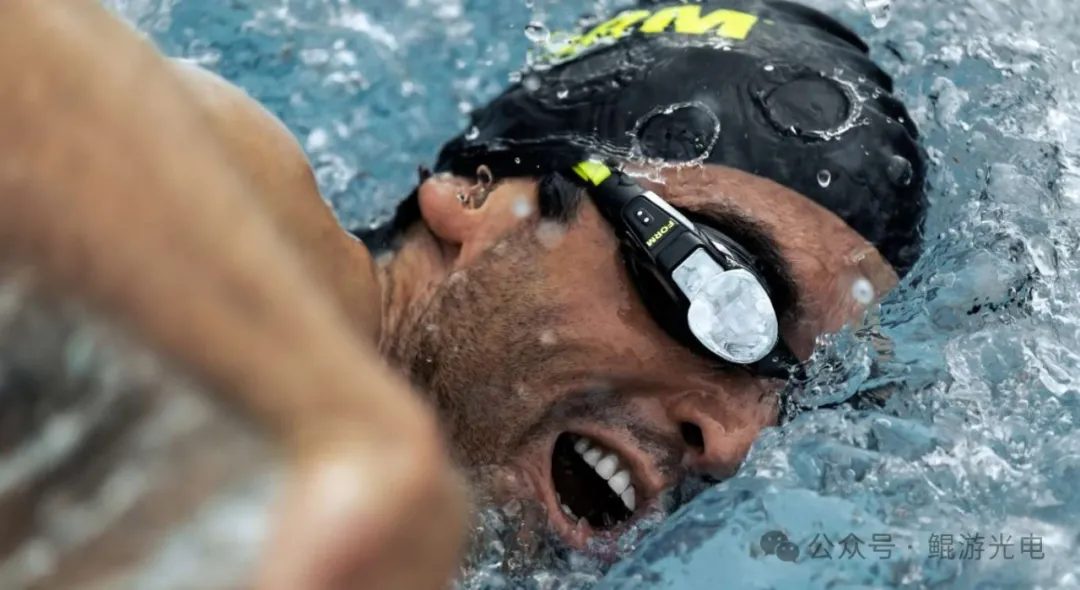
Source: https://www.nweon.com
NTT QonoQ
At this year's MWC, NTT QonoQ Devices showcased their AR glasses concept prototype, "QonoQ Glass." This is a lightweight, high-performance AR glasses equipped with 6DoF sensors and cameras, supporting wireless connectivity, with the chip using Qualcomm's Snapdragon AR2. On the content side, the company is rapidly expanding its business in both hardware and software, including the acquisition of Japanese game company Xeen.

Source: MicroDisplay
RayNeo
RayNeo Innovation released the RayNeo Air 2s AR glasses, priced at RMB 2,698, with a first-trial price of RMB 2,399. In terms of display, the RayNeo Air 2s features RayNeo's self-developed BirdBath optical engine and Sony's flagship low-power Micro OLED screen, with a resolution of 3840*1080, 600 nits of brightness, 100,000:1 contrast ratio, 108% sRGB color gamut, Gamma 2.2 color accuracy, and 16.7 million colors. It is claimed to be the world's first AR glasses to pass the ZREAL Frame Enjoy Ultra HD certification.
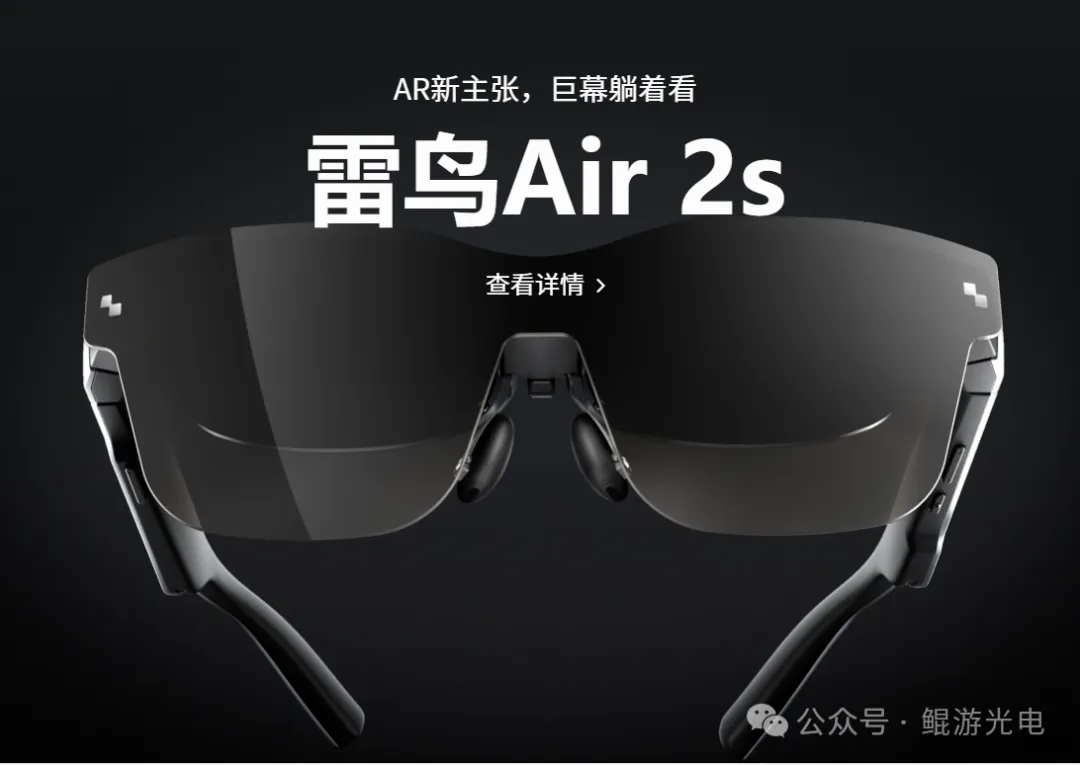
Source: RayNeo Innovation
VITURE
Recently, AR glasses manufacturer VITURE released its latest AR glasses product, VITURE Pro. The VITURE Pro adopts a split design, weighing 78g, supporting electrochromic and diopter adjustment; equipped with a new Micro-OLED screen, with an eye brightness of up to 1000 nits, a refresh rate of 120Hz, and an equivalent display area of 135 inches at 10 feet. The glasses are priced at $459, approximately RMB 3,325, while the set with a mobile base and handle is priced at $588. Additionally, the mobile base can connect to external devices such as the Switch, supporting 3D media and games, while effectively extending battery life, reducing the need for frequent charging.
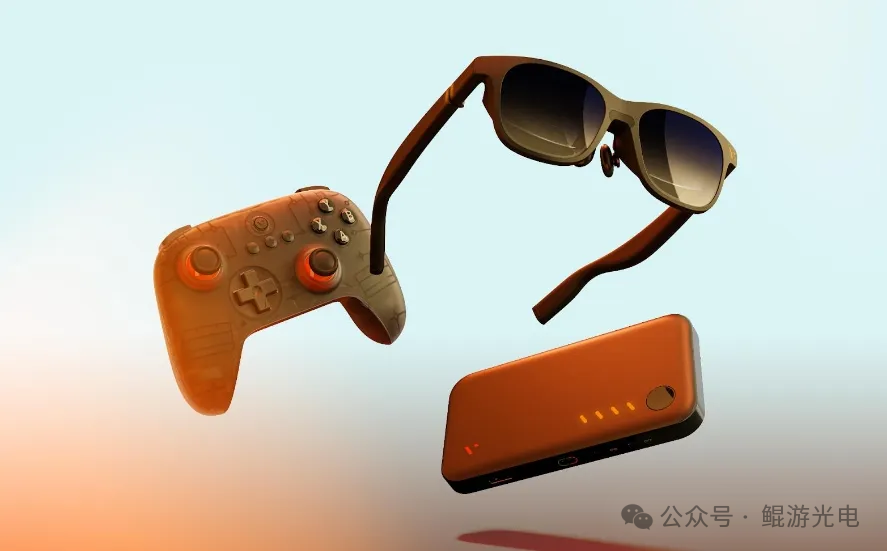
Source: Sina VR
Sightful
Sightful launched the new AR notebook, Spacetop G1. Last year, Sightful introduced the world's first augmented reality (AR) laptop, Spacetop, which claimed to use AR to eliminate the physical limitations of standard laptops, allowing users to carry a large, private virtual workspace with them. Essentially, it can be seen as a "headless Android notebook" paired with AR glasses.
The AR glasses paired with Spacetop G1 are the new XREAL Air 2 Ultra glasses, with an equivalent display size of 100 inches, a projection frequency increased from 72Hz to 90Hz, and the same resolution as before at 1080p. However, the field of view (FOV) has decreased from 53° to 50°. The price is $1,900, with a $100 deposit required, and shipping is expected by the end of October this year.
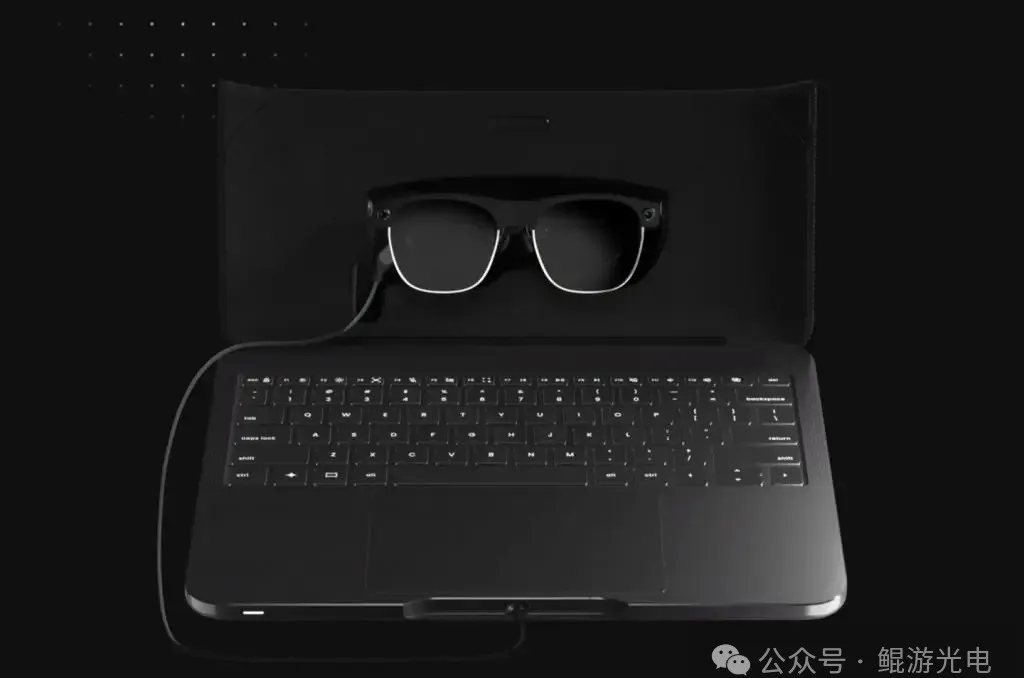
Source: Sightful
XRAI Glass
XRAI Glass recently announced the launch of its own AR glasses, the XRAI AR One. These smart glasses aim to meet the needs of the global deaf and hard-of-hearing community, providing greater accessibility and changing the way people experience conversations.
The AR One smart glasses feature an ultra-lightweight and wireless design, prioritizing user comfort without compromising functionality. Driven by the latest advancements in AI, these glasses allow users to see real-time captions in over 140 languages right before their eyes. The addition of transparent lenses ensures a fully immersive experience, enabling users to enjoy captioned conversations while staying engaged with their surroundings.
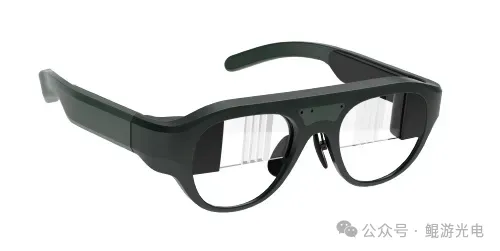
Source:XRAI Glass
Industry R&D Trends
Q-Pixel AM-Micro LED
Full-Color Display
US-based Micro LED display startup Q-Pixel announced the successful development of the world's highest pixel density AM-Micro LED full-color display. The display boasts a pixel density of 6800 PPI, with a size of 1.1cm*0.55cm and a resolution of 3K*1.5K, far exceeding the performance of other displays. For example, the pixel density of the display used in Apple's Vision Pro is 3380 PPI.
Q-Pixel achieved this high pixel density full-color Micro LED product through its proprietary Tunable Polychromatic LED (TP-LED) technology. The TP-LED technology allows a single LED pixel to emit any color in the spectrum without the need for additional sub-pixels, quantum dots, color filters, polarizers, or chip stacking to achieve full-color display. Q-Pixel's single TP-LED greatly simplifies the assembly process of Micro LED displays, reducing manufacturing costs while achieving a world-record pixel density.
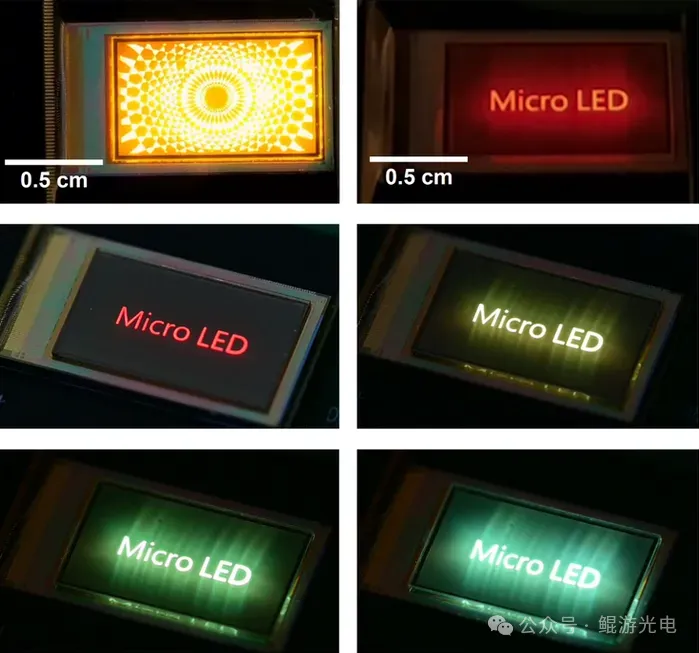
Source: LEDinside
NOVOS Micro-LED
Micro Display Chip
NOVOS Technology successfully lit up the world's first XGA vertically stacked full-color Micro-LED micro display chip. The chip uses the WLVSP™ (Wafer-Level Vertical Stacked Pixel) technology to integrate RGB colors and a CMOS driver backplane, marking a significant breakthrough in NOVOS' core technology for single-chip full-color Micro-LED micro displays.
The chip lighting used NOVOS' self-developed innovative VSP technology, which deeply integrates IC processes and LED technology. By stacking multiple light-emitting units vertically, the technology combines the advantages of large-size epitaxy, homogeneous integration, and extremely small pixel size, achieving breakthroughs in cost, yield, and performance. It is expected to become the best technical solution for the commercialization of Micro-LED micro display chips.
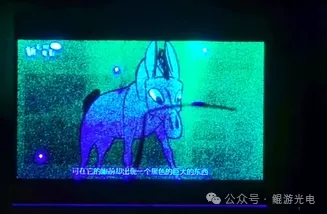
Source: CINNO
JBD AR Waveguide Image Quality Correction
Domestic Micro-LED technology developer JBD announced the launch of its AR waveguide image quality correction device, ARTCs. ARTCs aims to eliminate issues such as display non-uniformity and individual differences in the practical application of waveguides. Data indicates that the global brightness uniformity of diffraction waveguides optimized by ARTCs can be improved from...
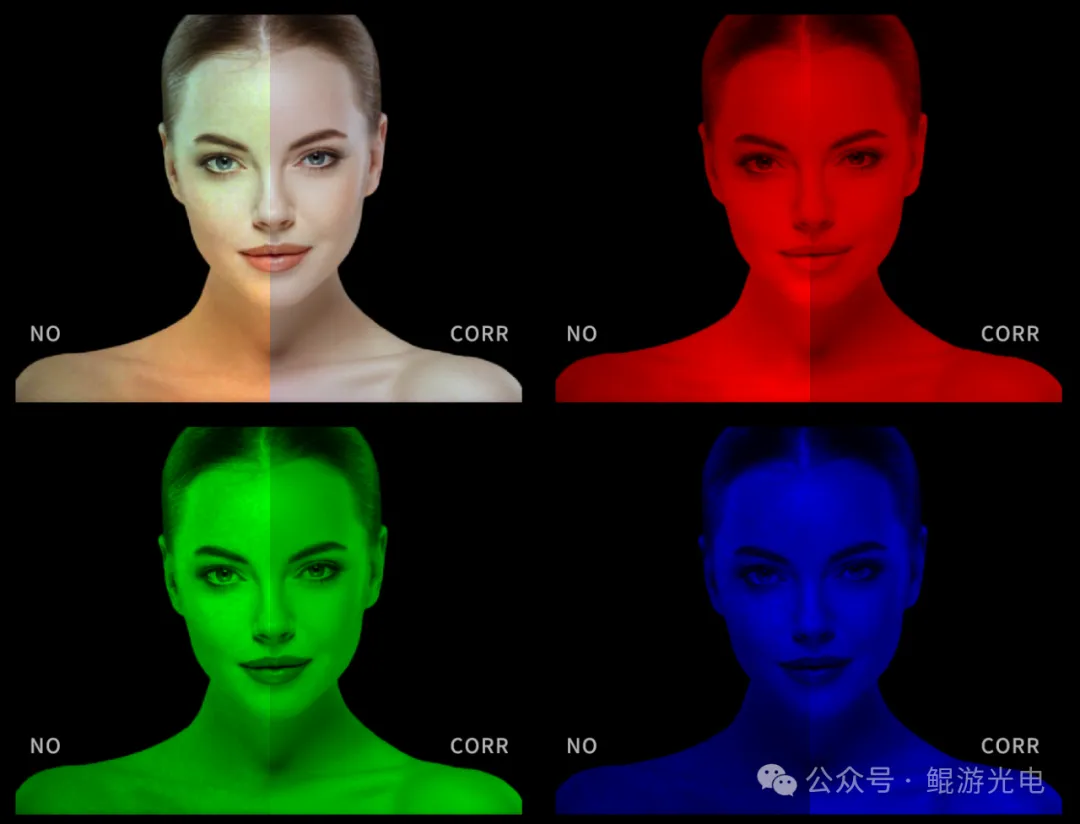
Source: MicroDisplay
VueReal Colour Fusion
Micro LED technology developer VueReal recently announced the launch of the ColourFusion MicroDisplay, which significantly improves visual clarity and color accuracy. The ColourFusion MicroDisplay integrates full-color MicroLED technology, image quality enhancement algorithms, and LCOS systems, providing high resolution, high grayscale and color depth, and high contrast through energy-efficient algorithms and variable frame rates, with a key focus on low power consumption.
The main features of the ColourFusion MicroDisplay include: Enhanced Resolution: By combining efficient full-color MicroLED with LCOS technology, the ColourFusion MicroDisplay offers enhanced pixel density and sharper visuals; Image Quality: Leveraging the power of full-color MicroLED, the display can produce a full spectrum of vibrant colors and high contrast without the challenges of traditional LCOS; Energy Efficiency: The use of full-color MicroLED displays enables low-power modes, where the display's frame rate can be adaptively adjusted based on usage, reducing system and display power consumption. The ColourFusion MicroDisplay can use more efficient MicroLEDs, achieving additional power savings.
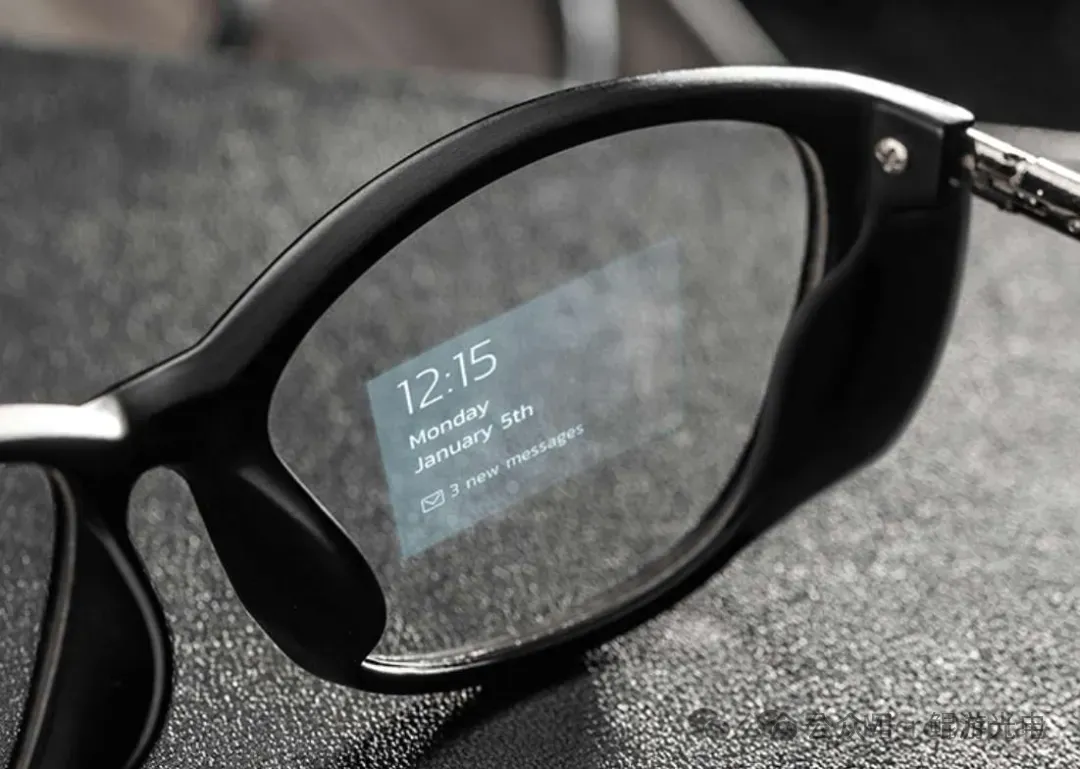
Source: https://www.nweon.com
Smartkem Proprietary OTFT Material Display
UK-based organic thin-film transistor (OTFT) material developer Smartkem showcased a Micro LED display sample based on its proprietary OTFT materials at SID 2024. The sample is a 96x96 Micro LED patterned array on a sapphire substrate, planarized using Smartkem's materials. Then, through photolithography and etching, vias are formed on the device contact pads, followed by sputtering to form a metal layer, and finally patterning to create the anode and cathode contacts for the Micro LED. The metal connections are selective, generating the displayed pattern image.
It is reported that the sample will undergo further processing to deposit Smartkem's OTFT materials, and direct drive connections will be replaced by driving TFT connections, which can be addressed in a matrix form to prepare an AM active-matrix display.
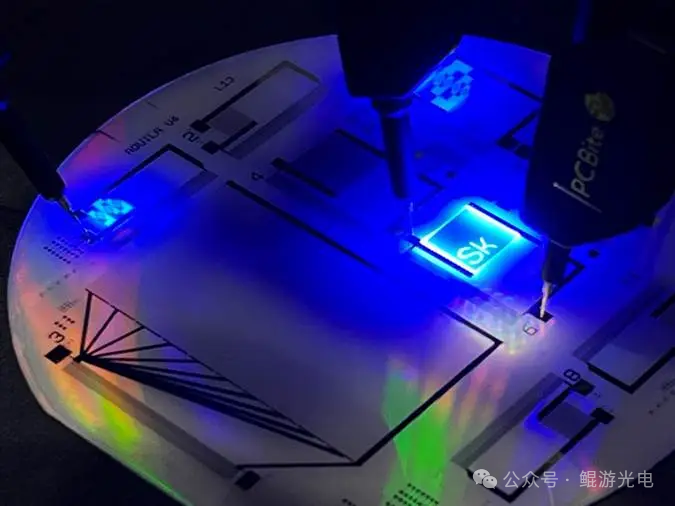
Source: Smartkem
Mojo Vision
Mojo Vision recently announced its latest technological achievements at SID Display Week. The company showcased a single-panel red, green, and blue (RGB) display with a pixel pitch of 4μm and a density of 6350 pixels per inch (ppi). Additionally, the company introduced a technological improvement that significantly increases brightness and reduces power consumption by up to 5 times compared to traditional LED structures.
Mojo developed the single-panel RGB display with 4μm pixels and 1.3μm sub-pixels using its proprietary quantum dot (QD) and integration processes. This compact single-panel Micro-LED display, with 6350 ppi, is designed for slim smart glasses, addressing pain points in current consumer market products such as high-definition viewing, size, weight, and battery life.
Mojo also demonstrated significant performance enhancements using a microlens array (MLA). Typically, LEDs naturally disperse light in multiple directions, resulting in wasted light. Less than 7% of LED output enters AR optics and reaches the human eye for visual processing. By using an MLA and lenses much larger than the Micro LEDs, Mojo's display can deliver up to five times more light to the human eye, significantly improving brightness and energy efficiency.

Source: MicroDisplay
Aledia
High External Quantum Efficiency Micro LED
Recently, French company Aledia announced the successful development of a Micro LED smaller than 1.5μm with an external quantum efficiency (EQE) exceeding 32%, achieving a wall-plug efficiency (WPE) of 320 milliwatts of visible light output per watt of electrical power, setting a new world record for energy efficiency.
Aledia stated that high EQE means more electrical power is converted into visible light, reducing energy consumption and extending device battery life. This also indicates that Aledia's Micro LED can provide bright, vivid displays while using less power, offering a new standard for high-performance, environmentally friendly display technology. Aledia also revealed that through deep-tech advancements, the newly developed Micro LED has made breakthrough progress in native red, green, and blue (RGB) directionality and pixel size reduction, making AR displays clearer and images more vibrant.
Aledia also disclosed that its Micro LED products have achieved 99% DCI-P3 color gamut standards, enabling a wider color range and further enhancing color fidelity in Micro LED technology, ensuring superior display performance in end applications.
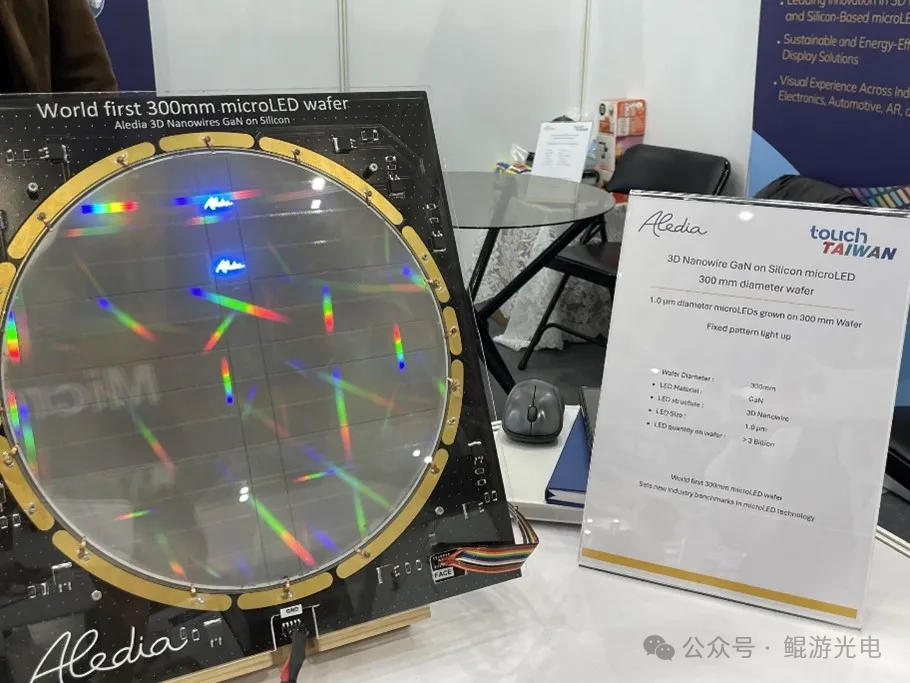
Source:LEDinside


